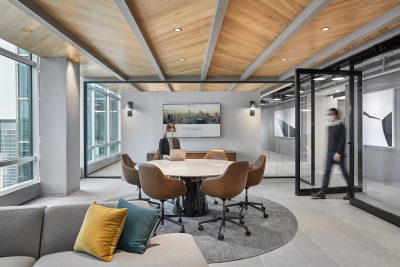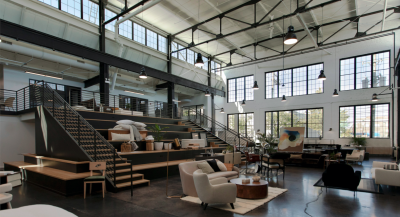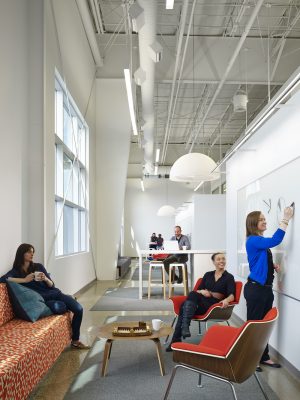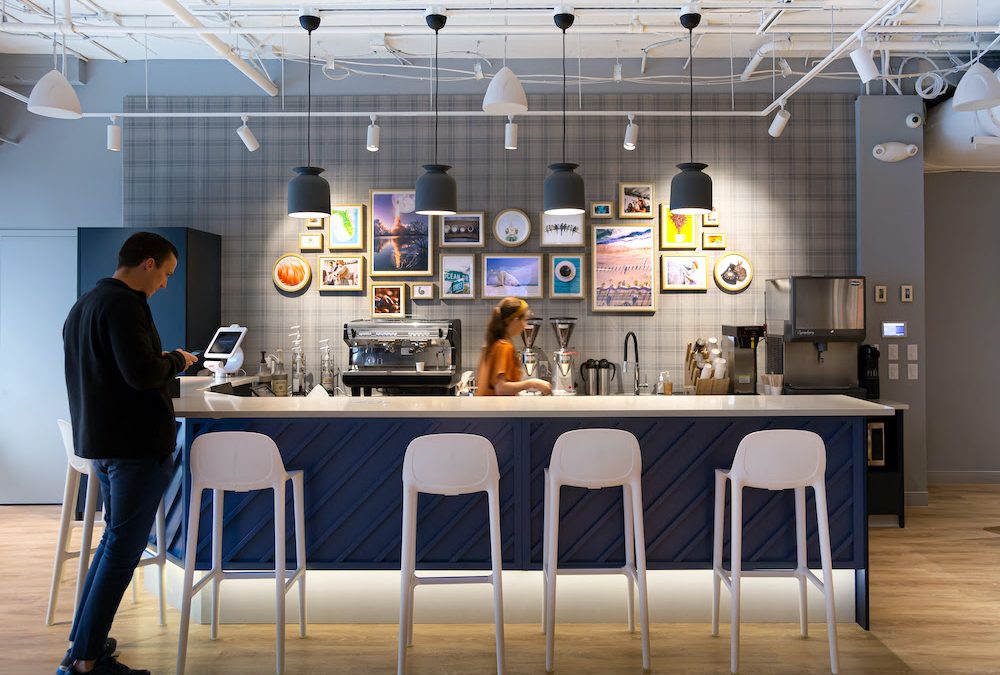The world had finally reached the point of orienting office designs toward the very top of the pyramid, creating spaces that helped workers develop and maximize talents, heighten creativity, and pursue big-picture goals and healthy, balanced lifestyles.
While those goals can, should, and do remain as the aspiration of any/all meaningful workplace design ideations happening today, the lessons we’ve collectively learned during this ongoing return-to-office phase should adjust our focus more intently toward the foreseeable future.
Does your workplace enable free movement and the ability for team members to shift to different types of workspaces depending on the time of day, the task at hand, or even their mood? Now more than ever, workplace design professionals need to think in terms of radically human-based solutions that create opportunities for workers to come together, draw inspiration from one another, have fun(!), and reestablish social connections (without abandoning practical, base-level considerations like acoustics and the need for at least occasional privacy).
Designing with Empathy
Impactful design requires shifting the focus from the designer’s perspective to that of the user, recognizing that the spaces we design are meant to be experienced and utilized by others. To truly understand the needs and desires of our clients, it is important to immerse ourselves in their processes and culture. This approach allows designers to tailor solutions to closely align with a client’s distinct requirements.

Design Conversations as a Catalyst for the Evolution of the Workplace
Social dynamics affected by the pandemic have presented significant challenges to how we work and socialize, but as humans adapt to this shifting society, we have been offered opportunities for deeper conversations. These conversations are leading to the evolution of the workplace. The design community finds itself at the forefront of these conversations, well-equipped with data collected over decades of workplace studies and with an understanding that introspection is essential for innovation. We look to guide clients through the processes rooted in re-establishing their culture and re-imagining a workplace environment fostering a sense of community and engagement.

Designing with users in mind involves active listening to gain meaningful insights into their operational protocols, needs, and challenges. This enables a deeper understanding of diverse backgrounds, personalities, work styles, and preferences to create inclusive and intentional environments. Through empathetic design, we can transform spaces into inviting and inspiring settings that nurture a sense of connection, belonging, and fulfillment which in return enhances engagement and productivity.

An Understanding of Different Personalities
Overall, it boils down to controlling stimuli. Post-COVID, people are coming back from quiet home environments and being confronted with very active workplaces which can cause overstimulation and trouble focusing. Within any given office, we look to create a range of working environments and support spaces that counterbalance an open office environment. These range from 2-3 person meeting rooms to individual phone rooms, and wellness rooms.
Thank you for your time. Please reach out anytime if we can be of assistance.

